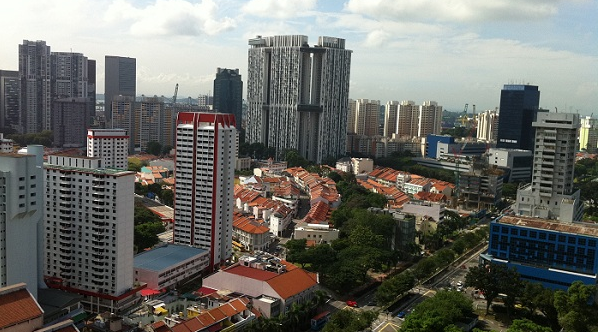
By Christopher Gee
The challenges presented by Singapore’s demographic trends (a rapidly ageing population, with a group of elder Singaporeans with limited education who make up more than 40% of the bottom fifth of income distribution) have necessitated a change in national priorities. Singapore was a much younger nation (politically, economically as well as in its age structure) when in 1967 the then-Health Minister Yong Nyuk Lin [1] set out an order of priorities for the use of public funds as follows: (1) security and defence, (2) creation of job opportunities, (3) housing, (4) education and (5) health.
Whilst security and defence and economic considerations continue to be fundamental concerns, the very significant budget allocations to the Housing Development Board (HDB) in the years following independence is an effective precedent for how the right emphasis in public financing and a whole-of-government high ranking in the order of priorities can transform an important pillar of societal well-being (in this case, housing). In the five government budgets from 1972-1976, the allocations to the HDB averaged 15.9% of total government budgeted expenditures (Figure 1), and were the second largest allocations to any government agency or ministry (after defence and internal security).
Coupled with innovations in housing finance (especially the Central Provident Fund Approved Housing Scheme introduced in 1968), the significant investments in public housing raised the share of the resident population living in HDB flats from just under a quarter at the time of independence to 81% by 1985 (Figure 2). No other country in the world houses as many residents in public housing as Singapore, and Singapore’s public housing system is world-renowned and much studied as a successful model.
Today, government allocations for public housing to the HDB represent only about 3% of the total government budget (2.1% in FY2013, or $1.13billion). Education is now the second largest allocation (again after defence), which is understandable given its central role in promoting social mobility [2]. Health is fourth, after transport which is the third largest allocation.
Beyond the simplistic characterisations of Singapore’s FY2013 Budget as a Robin Hood budget, it is clear then that a significant shift in the direction of public expenditure is taking place. Deputy Prime Minister and Minister for Finance Tharman Shanmugaratnam stated in his Budget Speech 2013 that the government is “reshaping policies and driving new initiatives, especially to sustain social mobility and strengthen support for older Singaporeans”. The budget allocations in FY2013 for the ministries of education and of health were boosted by $1billion each compared with the previous year’s allocations, whilst the combined allocations to the Ministry of Social and Family Development and the Ministry of Culture, Community and Youth were also increased by $1billion versus the budget for the predecessor Ministry of Community, Youth and Sports in FY2012 (Figure 3). Also of note is the fact that all these increased allocations were achieved within a budget that is projected to show a modest surplus.
The share of government expenditure on the key social pillars such as (1) education, (2) health, (3) family and community programmes and (4) active labour market programmes has increased in the last ten years both as a share of nominal GDP as well as a share of total government budgeted expenditure.
Transformational opportunity in Singapore’s social infrastructure landscape?
There may be more to come. In November 2012 the Minister for Health Gan Kim Yong announced that the Government’s healthcare expenditure would be doubled over the next five years. The Ministry of Education has committed to $29 billion-worth of investment in institutions of higher learning and other substantial sums to enhance continuing education and training (CET). The Senior’s Mobility Fund was expanded into a Senior’s Mobility and Enabling Fund and boosted from $10 million to $50 million, whilst the Eldercare Fund was topped up with an additional $250 million, bringing the fund to $2.75 billion.
In addition to boosting spending in these key areas, there is now an opportunity to re-look the fundamental philosophies and guiding principles by which these critical social services are delivered. Whilst Singapore now stacks up well in a number of global health and education rankings, the challenges to the status quo from an ageing population, globalisation and the rapidly changing requisites of 21st century employments necessitate substantial re-programming of a social infrastructure crafted under very different demographic and economic conditions.
By elevating these key social pillars to a status and priority in policy-making similar to that enjoyed by public housing in the 1960s and 70s, it may be possible to consider the increased expenditures in these areas not as a societal burden and costs to be avoided, but rather as investments in Singapore’s future, as much an engine of national development and well-being as public housing was in Singapore’s early years.
————–
Notes:
[1]: A speech at a World Health Organization (WHO) meeting, November 1967.
[2]: In Singapore’s meritocratic society, education is seen as the main social security pillar which can promote social mobility. The narrative on education is that it is an investment for employment and economic growth given that people are the country’s only resource. Employment is one of three original pillars of Singapore’s social security framework before Workfare was added – see http://www.fas.nus.edu.sg/ecs/scape/doc/24Oct08/Tan%20Li%20San.pdf
[3]: Social development expenditure defined as that in four broad policy areas: education, health, family and community programmes, and active labour market programmes.





